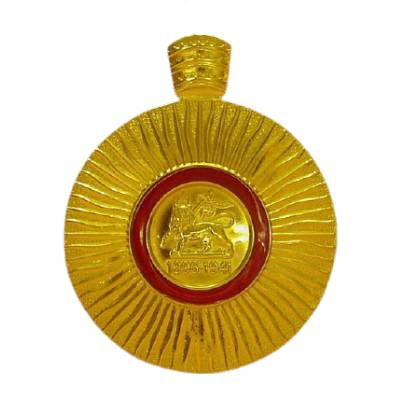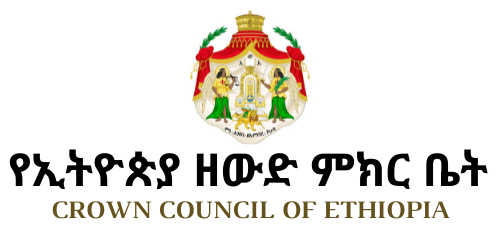
The Order of the Ethiopian Lion has its origins in the Order of Menelik II and acquired Insignia of its own in March 1996 on the one-hundredth anniversary of the Victory of Adwa. The Order may be said to rank equally with the Order of Emperor Menelik II, from which it derived, and the Order of Haile Selassie I.
The Order comprises five grades: Knight Grand Cordon, Grand Officer, Commander, Officer and Member. The Order is bestowed for distinguished and meritorious service to the Crown Council and is under the personal Grand Mastership of Prince Ermias Sahle-Selassie Haile-Selassie. The Order has been accorded to Christians and Moslems and thus departs from most other Imperial Orders in that there is no overt religious symbolism. Ambassadors, Ministers, Staff Officers, Academicians and other professionals have received the Order with a preponderance of conferrals to Africa, the Caribbean and Middle East.London medallist Spink has made the Order, although it is now made by the Crown Medallist, Bezant.
The Insignia depicts the Lion of Ethiopia on a circular shield which in turn is engraved with rays of the sun. The Julian calendar (ie: Ethiopian calendar) dates “1889” and “1933” (equivalent to the Gregorian calendar dates 1896 and 1941) appear in Amharic below the lion, commemorating two years when Ethiopia resisted European colonialism. On the original striking of the Order, the dates appeared with the Gregorian calendar dates in Western script. The Imperial Crown is attached to the badge by way of an enamelled bow in the colours of the Ethiopian tricolour. The riband is a rich hue of salmon pink with the tricolour of green, gold and red in the centre.
It is interesting to note that the Imperial Lion appears on the Imperial Order of the Lion facing left, instead of the more customary right-facing position. This is to indicate that the Order, although it had its origins in the Order of Emperor Menelik II, was given its independent status when the Crown was in exile. The left-facing lion is meant to show that the Order was created when Ethiopia was in a condition of adversity and distress, and it honors those who fought for Ethiopia’s reconstruction and resurrection during this period.
Holders of the order may identify their award with the use of the following post-nominal initials: GCEL (Knight Grand Cordon); GOEL (Grand Officer); CEL (Commander); Officer (OEL); and Member (MEL).


